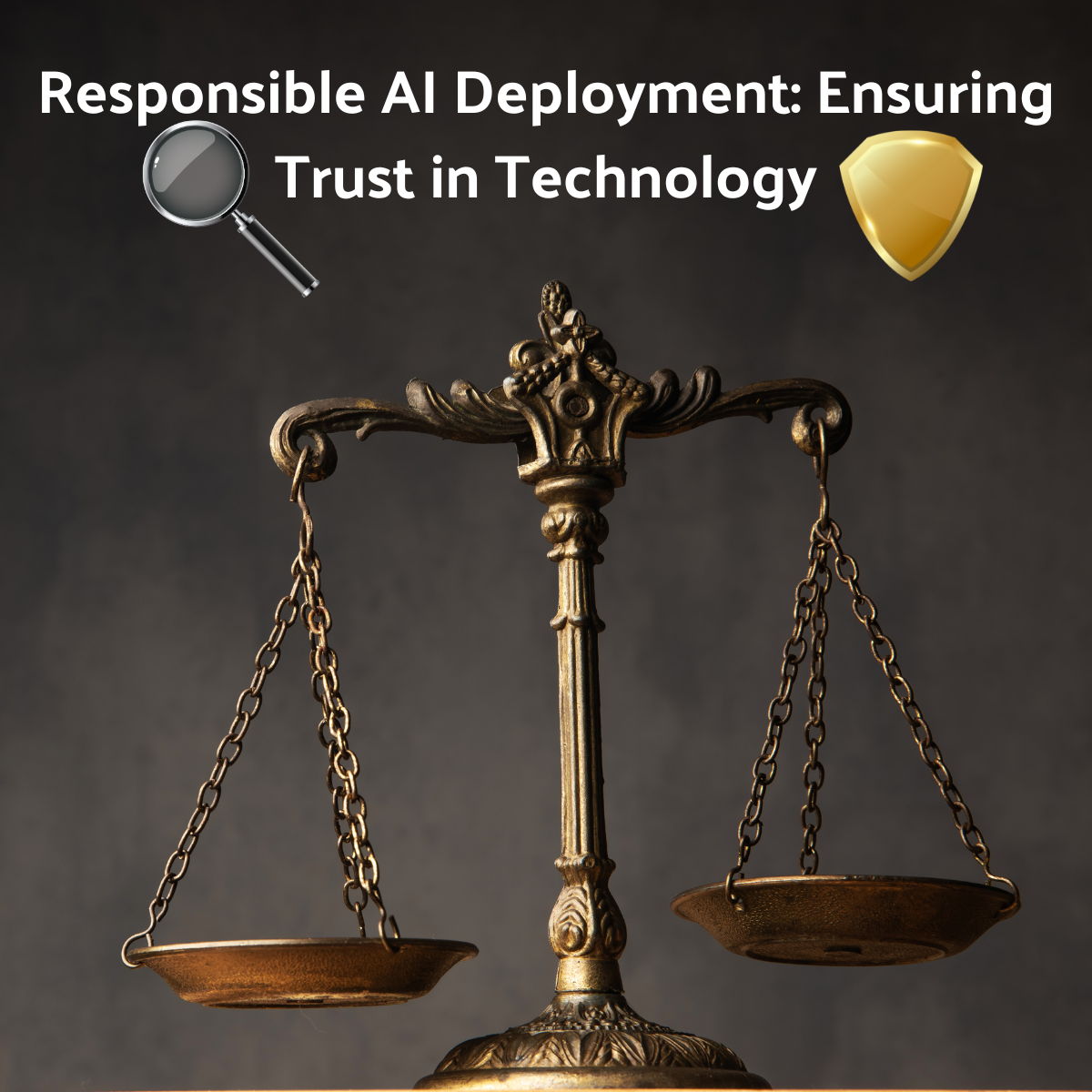Posted At: Aug 16, 2025 - 261 Views

🔍🛡️ Responsible and Transparent AI Deployment: Ensuring Trust in Technology
Artificial Intelligence (AI) is rapidly shaping industries, economies, and societies. From healthcare diagnostics and financial services to retail personalization and autonomous vehicles, AI has become integral to modern life. Yet with its immense potential comes equally significant responsibility. As AI systems influence critical decisions, concerns around fairness, accountability, and transparency have become central to discussions about its deployment.
Building trust in AI requires more than technological innovation—it requires ethical foresight, responsible practices, and a commitment to transparency.
✴️ Understanding Responsible AI
Responsible AI emphasizes the design and deployment of AI technologies that align with human values, societal norms, and ethical principles. It’s not just about performance—it’s about ensuring that technology benefits people equitably and sustainably. Key pillars of Responsible AI include:
▪️ Fairness
AI should minimize bias and discrimination. Since algorithms are only as fair as the data they are trained on, organizations must carefully evaluate training datasets, monitor outputs, and adopt inclusive evaluation frameworks. The goal: ensure equitable treatment across demographics, industries, and geographies.
▪️ Accountability
AI decisions must not exist in a vacuum. Organizations must establish clear governance structures that define who is responsible for oversight, decision-making, and addressing unintended consequences. This ensures accountability is traceable and enforceable.
▪️ Privacy
With AI systems often reliant on large datasets, protecting personal data is critical. Strong governance practices, anonymization techniques, and compliance with privacy regulations (e.g., GDPR, CCPA) are essential for safeguarding user trust.
▪️ Sustainability
AI requires significant computational power, which directly impacts energy consumption and environmental sustainability. Designing energy-efficient algorithms, using greener data centers, and adopting responsible development practices can help minimize AI’s ecological footprint.
✴️ The Importance of Transparency
Transparency serves as the foundation for trust. When users and stakeholders understand how AI systems operate, they are more likely to embrace them.
▪️ Explainability
AI systems—especially in sensitive sectors like healthcare, finance, and criminal justice—must provide clear explanations for their outputs. Explainable AI (XAI) helps stakeholders understand the reasoning behind recommendations or decisions, reducing the “black box” effect.
▪️ Open Communication
Organizations should openly share their AI policies, including how data is collected, processed, and protected. Transparency about limitations and risks is equally important, as it builds credibility and empowers informed decision-making.
▪️ Inclusive Design
By involving diverse voices—developers, ethicists, policymakers, and end-users—organizations can better identify blind spots and biases. Inclusive collaboration ensures AI systems reflect a broader range of perspectives, improving fairness and trustworthiness.
✴️ Strategies for Responsible and Transparent AI Deployment
To put these principles into practice, organizations can adopt the following strategies:
✅ Establish Ethical Guidelines
Develop internal AI ethics charters that define clear principles for development and use. These guidelines should be reviewed regularly as technology and regulations evolve.
✅ Conduct Impact Assessments
Before deploying AI, conduct thorough assessments to evaluate potential social, ethical, and environmental impacts. This proactive step helps mitigate risks and align systems with desired outcomes.
✅ Implement Governance Frameworks
Adopt governance models that ensure oversight across the AI lifecycle—from data collection to deployment. Independent audits and review boards can strengthen accountability.
✅ Invest in Training and Education
Equip employees with training on responsible AI practices. Teams must understand both the technical and ethical aspects of AI to make informed, balanced decisions.
✅ Encourage Public Engagement
Engage with stakeholders—customers, regulators, and communities—through consultations, workshops, or advisory boards. Public input enhances transparency, builds trust, and creates shared ownership of AI outcomes.
✅ Final Thoughts
Responsible and transparent AI deployment is not just a regulatory requirement—it’s a competitive advantage. Businesses that prioritize fairness, accountability, privacy, and transparency will be better positioned to earn trust, foster innovation, and maintain long-term relevance in an AI-driven world.
As AI continues to evolve, the challenge is clear: ensuring that technological progress is matched with ethical responsibility. Only then can AI truly serve humanity in ways that are fair, trustworthy, and sustainable.
